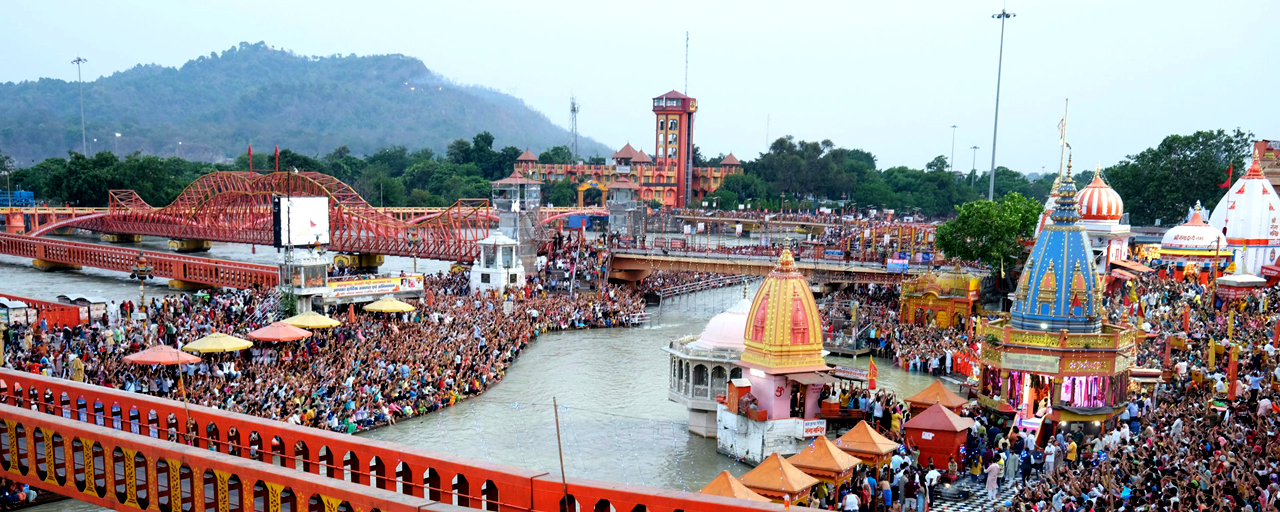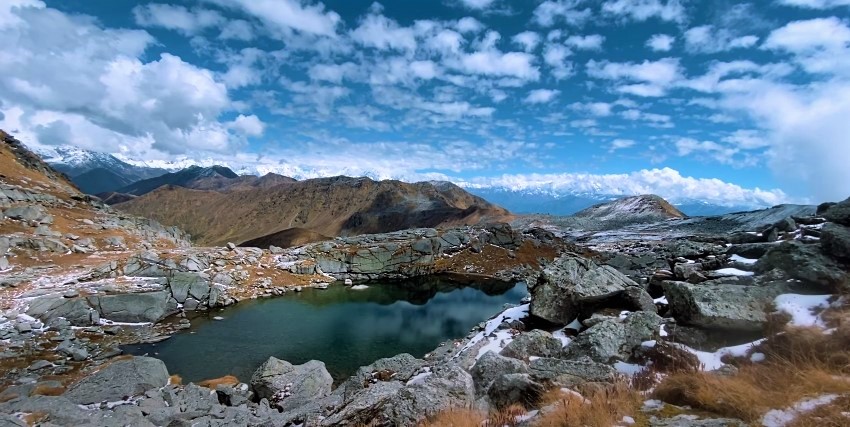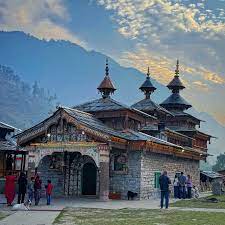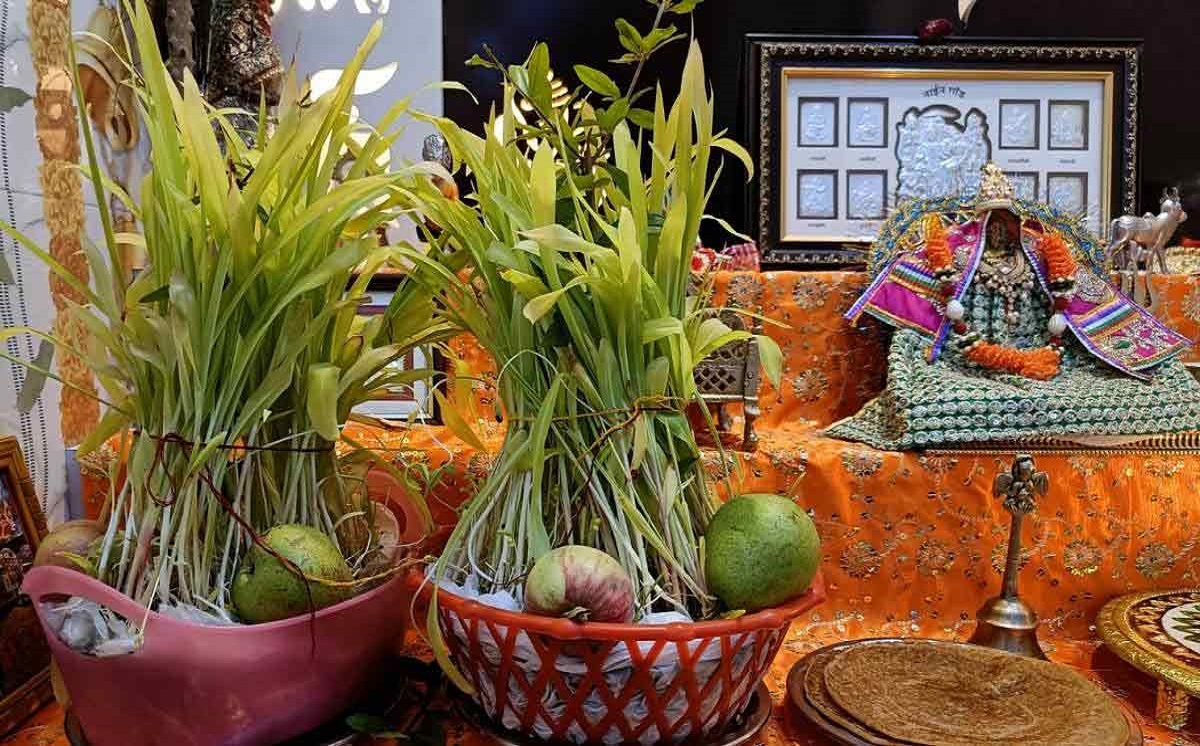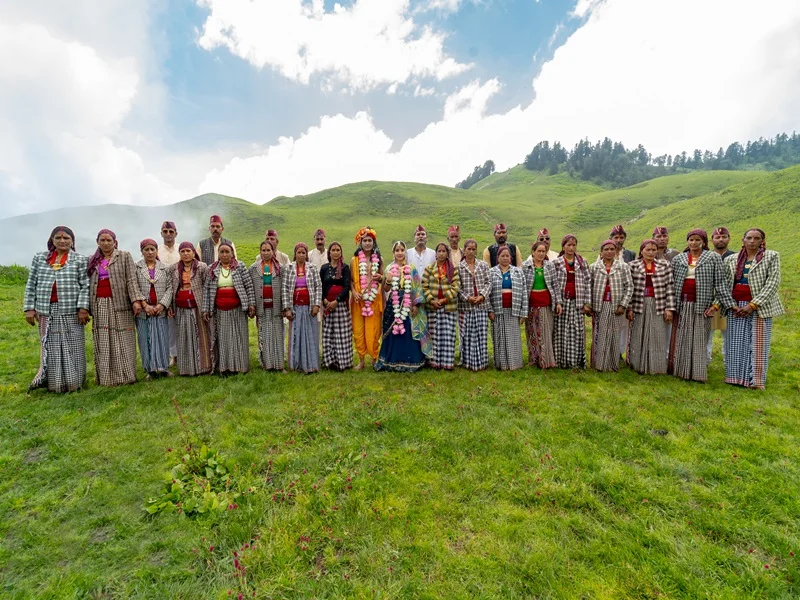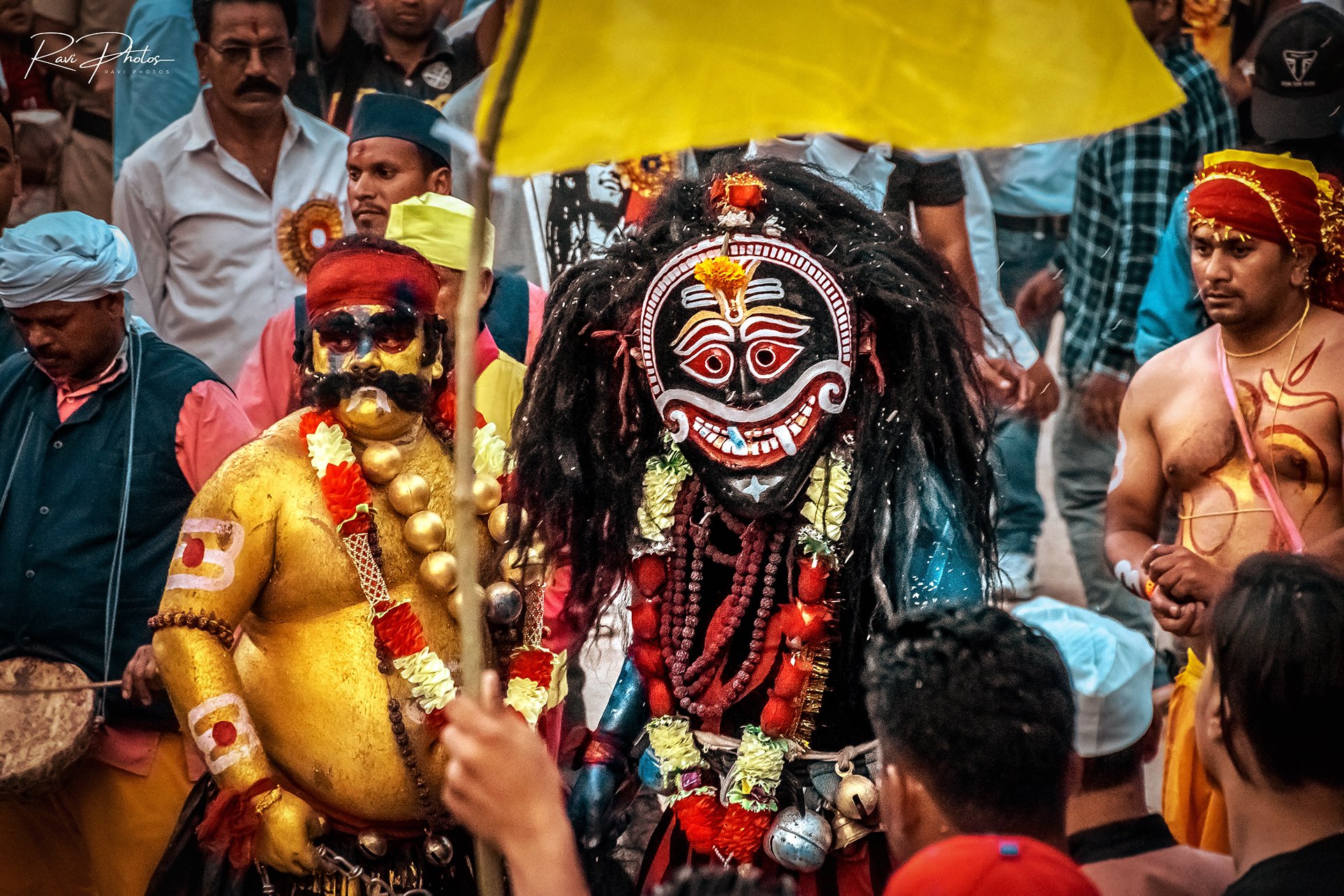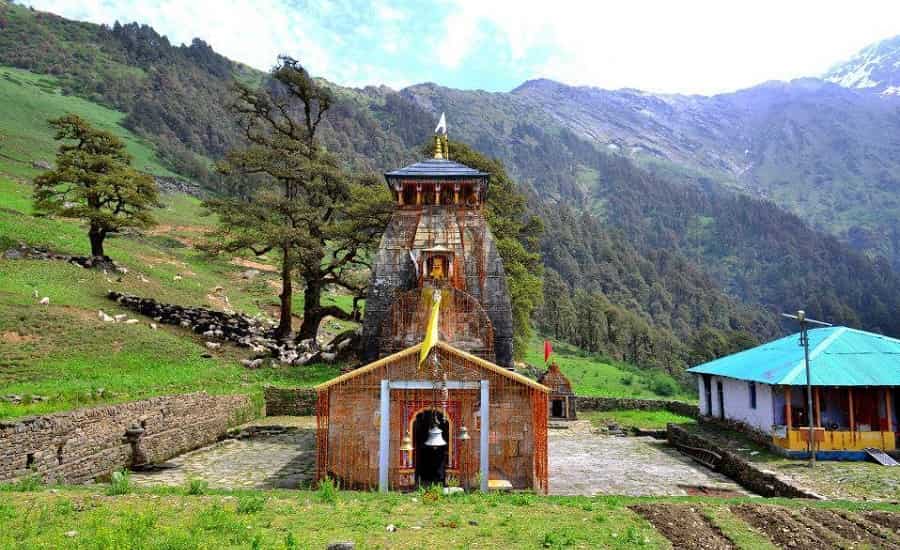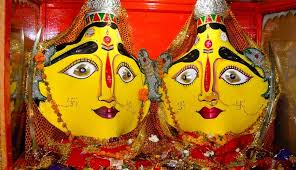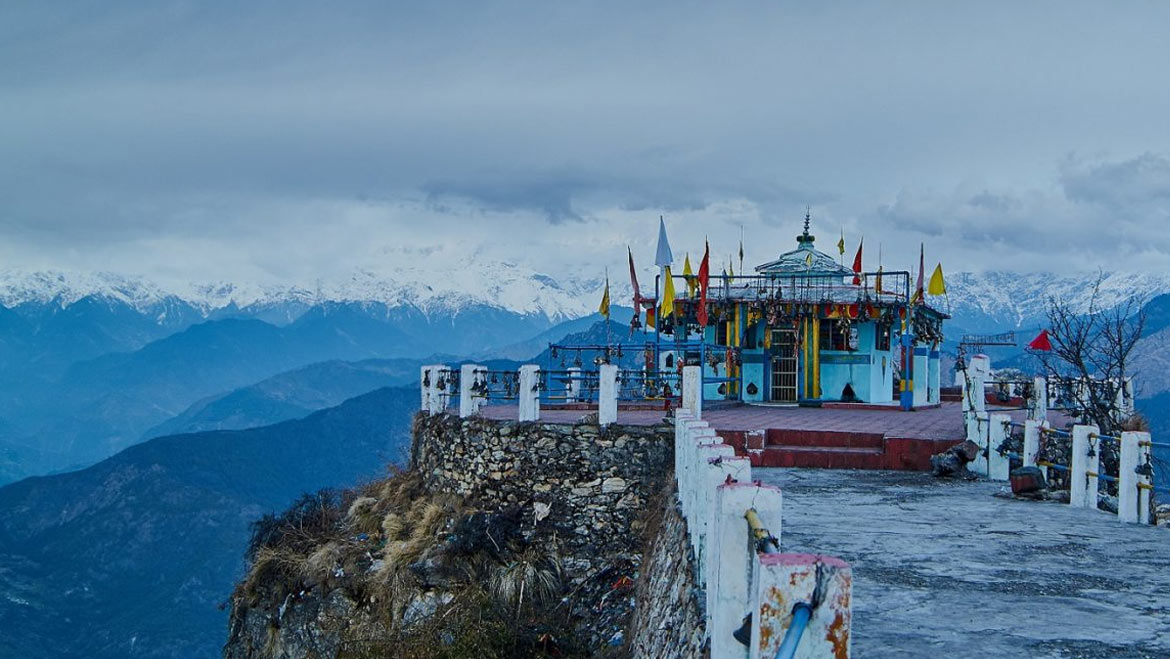Arriving in Haridwar
You can scent it before you spot it. Smoke from अगरबत्ती (incense sticks), fried snacks, and moist earth close to the ghats. The streets are full; however, no person seems surprised. Buses sell off households with metallic trunks, rickshaw pullers shout for fares, youngsters cling to their mother’s साड़ी (saree).
Then you pay attention to it. The chant that rises and falls, “हर हर महादेव, हर हर गंगे.” You follow the sound and discover yourself at हर की पौड़ी (Har Ki Pauri). The Ganga flows constant, wearing daylight on her floor, at the same time as the group around her swirls like a hurricane.
The Story That Brings Them
Ask anybody why they're right here and the answer will touch the equal legend. The समुद्र मंथन (Samudra Manthan), when the gods and demons churned the ocean for nectar. The अमृत (Amrit) spilled, four drops touched Earth, one here in Haridwar.
Old men say it like a fact, not a delusion. “यहीं अमृत गिरा था, बेटा,” one advised me, cupping river water in his arms. His voice became cracked, however steady. People trust that a dip here in the course of Kumbh can wash away sins, even lifetimes of them.
And when you stand among them, watching eyes close and lips murmur mantras, belief itself feels like truth.
Shahi Snan
The royal bath, शाही स्नान, is the heartbeat of the mela. At dawn, when the mist still covers the ghats, you hear the blast of शंख (conches). Then they appear. The नागा साधु (Naga sadhus), ash smeared, hair flying, shouting “हर हर महादेव” as they run into the river. They dive, splash, and rise with water dripping down their chests.
Behind them, processions of अखाड़ा (akhara) saints march with flags and drums. Some sing bhajans, some walk in silence, some whirl tridents in the air. And then, ordinary people. Women in wet sarees holding copper pots, children shivering after their dip, men carrying bottles of गंगा जल (Ganga water) home.
From the banks, it looks wild, but inside the water, it feels calm. Everyone finds their own prayer.
The City Becomes the Festival
During Kumbh, Haridwar itself shifts. Empty fields turn into डेरा (camps). Rows of पंडाल (pandal tents) stretch endlessly, with orange flags snapping in the wind. Inside, simple bedding, lanterns, and the scent of burning wood. Families huddle beneath blankets, rising earlier than dawn to stroll to the ghats.
Food is everywhere. लंगर (langar) kitchens serving dal and roti all day, volunteers shouting “बैठ जाओ, प्रसाद लो.” The taste of that food, eaten sitting cross-legged on the ground, stays longer than any restaurant meal.
Markets spill across lanes. Stalls with rudraksha beads, पीतल (brass) diyas, piles of guavas, hot जलेबी (jalebi) dripping syrup. A chaiwala hands you a clay cup of चाय (tea) so hot it burns your fingers, but you drink anyway.
Faces in the Crowd
The numbers are impossible to imagine. Millions, they say. But when you are there, you don’t count numbers. You see faces.
A grandmother in a soaked साड़ी, whispering “ॐ नमः शिवाय.” A boy laughs as he fills a plastic bottle, splashing more than he saves. A sadhu pressing his palm to a stranger’s forehead and muttering “भला होगा बेटा”.
I watched a young man help a stranger down slippery steps, both laughing when they almost fell. They never spoke again. That moment was enough.
Beyond the Bath
Dip done, people don’t leave. The mela itself is a world. Akhara camps where saints debate under smoky tents. Some talk of scriptures, others of politics, others just tell stories.
Langars where plates never run dry. You eat दाल, रोटी, खिचड़ी, sometimes halwa, always with strangers who become family for that meal.
Pravachans were voices that rose from microphones, explaining old truths in new words.
बाज़ार (bazaar) is alive with color, wooden toys, brass bells, sweets, herbal medicines, and cheap trinkets for children. It is half fair, half pilgrimage, and entirely alive.
Old and New Together
Haridwar during Kumbh is an ancient ritual meeting modern order. Loudspeakers announce safety tips. खोया-पाया (lost and found) centers reunite lost children with parents. Police lines move crowds gently but firmly. Above, drones buzz.
And yet, none of this touches the river’s heart. When you stand by the Ganga at dusk, watching diyas float, it feels the same as it must have felt a hundred years ago. Maybe more.
If You Plan to Go
- When: Every 12 years (next in 2027). Ardh Kumbh every 6 years.
- Where: Haridwar, Uttarakhand, mostly around Har Ki Pauri.
- Carry: Strong जूते (shoes), water bottle, shawl for cold mornings, and patience.
- Expect:
- Massive crowds.
- Shahi Snan processions.
- Free langars.
- Saints, bhajans, and akharas.
- A marketplace buzzing till midnight.
Tips:
- Morning dips are smoother.
- Stay close to your group.
- Don’t photograph people without asking.
- Sit for गंगा आरती (Ganga Aarti) at night, and it will stay with you.
Why It Matters
The Haridwar Kumbh Mela (हरिद्वार कुंभ मेला) isn’t built for show. It has been flowing for centuries, like the river itself. It matters due to the fact that hundreds of thousands stroll right here not for spectacle, but for religion. Because strangers feed each other, they are manual each other, carry each other.
And as it reminds us that devotion doesn’t want noise, it's simplest wishes water, a prayer, and a heart that believes.
Closing
By night, lamps drift on the Ganga. The river glows with flames, bells ring, smoke drifts from incense, and voices chant together. The crowd that felt overwhelming in the morning now looks like an unmarried frame, breathing as one.
You walk away moist, tired, hungry, however lighter. Because the Kumbh doesn’t just happen outside, it happens inside you.
And once you’ve dipped in the Ganga at Haridwar, you don’t just remember it—you carry it forever.

